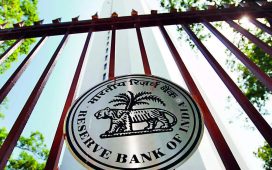The days of monthly inflation figures exceeding expectations and causing a stir on trading floors around the Square Mile seem to be over. The latest figures released this morning were more subdued, with the headline rate remaining steady at 2.2 per cent, exactly as predicted.
While there were some worrying signs beneath the surface, none were significant enough to cause alarm among the Monetary Policy Committee (MPC) members. Core inflation and services inflation, which are better indicators of underlying price pressures than the headline measure, both saw slight increases in August, but these were largely anticipated.
Services inflation, which has been a major concern for rate-setters in recent months, actually came in slightly below the Bank of England’s November forecasts. It increased to 5.6 per cent in August, up from 5.2 per cent the previous month.
This was mainly due to ‘base effects,’ reflecting the impact of last year’s figures on the annual comparison. Some of the other strength in services inflation could be attributed to changes in erratic areas.
For instance, air fares rose by 22 per cent month-on-month, marking the second highest increase on record. However, the MPC’s measures of underlying services inflation often exclude these more volatile components, as reported by City AM.
An announcement is expected from the Bank of England soon.
Matt Swannell, chief economic advisor to the EY Item Club, has commented that the recent rise in services inflation is expected to be “prove temporary”.
Food and energy prices have also risen less than anticipated, reinforcing the notion that inflation is largely under control.
However, this doesn’t mean an immediate rate cut from the Bank of England is on the cards, as services inflation remains high enough to cast doubt on a swift return to the two per cent target.
Ruth Gregory, deputy chief UK economist at Capital Economics, remarked: “There’s no denying that services inflation is still too high for the Bank of England’s liking.”
With regular pay growth staying above five per cent and unemployment dropping to 4.2 per cent, the labour market appears to remain tight.
Consequently, the general expectation is that the Bank of England will maintain rates tomorrow.
Nonetheless, economists are forecasting a gradual moderation in these indicators throughout the year, which should lead to at least one more interest rate reduction.
Sanjay Raja, chief UK economist at Deutsche Bank, believes the Monetary Policy Committee (MPC) will likely interpret the data as a “positive sign that underlying price pressures are easing”.
A rate reduction in November seems probable at this point, but the future trajectory is unclear. It’s important to note that one of the factors contributing to the expected easing of inflationary pressures is the maintenance of relatively high interest rates, so a swift rate cut by the Bank is unlikely.
However, it’s becoming increasingly evident that rates can continue to be lowered without triggering an inflation rebound.










